Panasonic G X VARIO PZ 14-42 mm f/3.5-5.6 ASPH. P.O.I.S.
3. Build quality and image stabilization
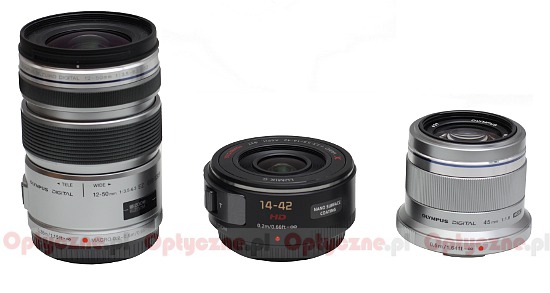 |
The tested device starts with a metal mount with contacts which surround an immobile rear element, 18 mm in diameter. The proper casing of the lens is covered by black plastics. A black tube, which is extended when the lens is in its working position, is already made of metal for a change.
Please Support UsIf you enjoy our reviews and articles, and you want us to continue our work please, support our website by donating through PayPal. The funds are going to be used for paying our editorial team, renting servers, and equipping our testing studio; only that way we will be able to continue providing you interesting content for free. |
- - - - - - - - - - - - - - - - - - - - - - - - - - - - - - - - - - - - - - - - - - - - - - - -
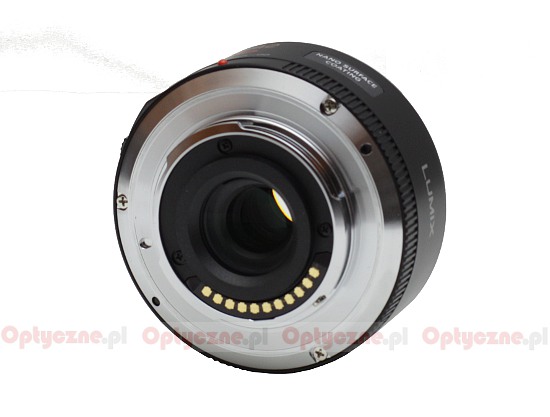 |
On the casing you can find a red dot which aids the alignment for mounting and, right next to it, a ribbed part. Right afterwards we have an inscription with the focal lengths and distance range. On the right you see another notice saying: NANO SURFACE COATINGS” which means that special anti-reflection coatings have been used. On the left there are two little sliders. The first one, with “W” and “T” symbols and an inscription “POWER ZOOM” is used for manual zooming. At the back of the lens you can also find its serial number and information that it was produced in Japan.
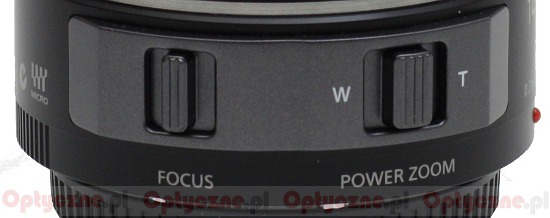 |
As we mentioned before the front element system extends on a metal tube, reaching its maximum length at 14 mm; then, with the increase of the focal length, it hides slightly inside the casing (the lens being the shortest at more or less 30 mm) and then it starts increasing again. The front element, which is 20 mm in diameter, is surrounded by an inscription with the name and parameters of the lens and a non-rotating filter thread, 37 mm in diameter.
We must honestly admit that, for a „kit” lens you deal here with a very solid construction which build quality would be hard to blame. In fact it is really the most solid 14-42 mm or 18-55 mm class kit lens we’ve ever tested. However you should also remember that none of kit lenses, tested by us before, has been as expensive as the Panasonic.
When it comes to the optical construction of the lens there are 9 elements positioned in 8 groups. Such a construction can be hardly called complex. For example most of 18-55 mm class kit lenses feature about 11 elements in 8 or 9 groups. Inside the lens you can also find an aperture with seven diaphragm blades which can be closed down to the value of f/22.
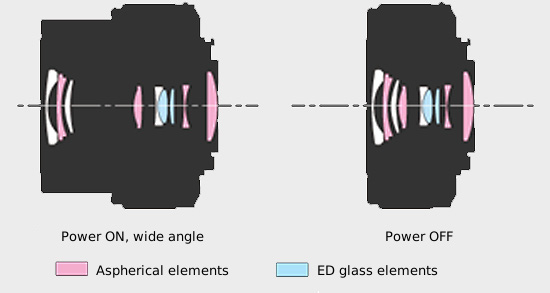
Buyers get only two caps with the lens. It is a pity the producer didn’t add a hood and/or a case for such a price.
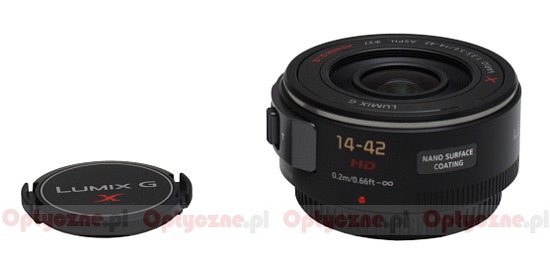 |
Image stabilization
The tested lens is equipped with an image stabilization mechanism – small wonder we decided to test its efficiency. In order to do that we took several dozen photos at 42 mm focal length using every exposure time ranging from 1/60 to 1/2 of a second with the stabilization switched on and off. The result, in the form of a graph presented below, shows the percentage of blurred photos depending on the exposure time, expressed in EV. It’s worth mentioning that the zero point on the horizontal axis is the equivalent of the 1/50 of a second exposure value.
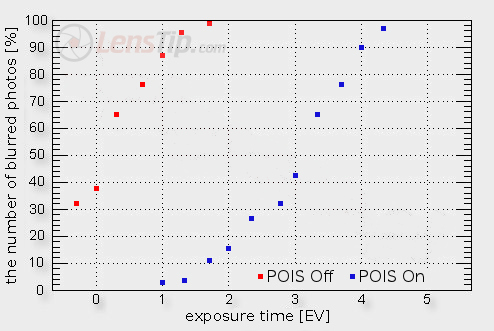
A distance between two curves is the measure of the stabilization efficiency. In this case it reaches a value of 3 EV which can be considered a good result and in this category the tested lens should be definitely praised.






